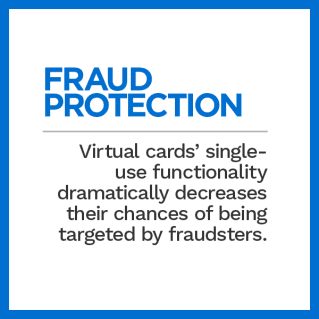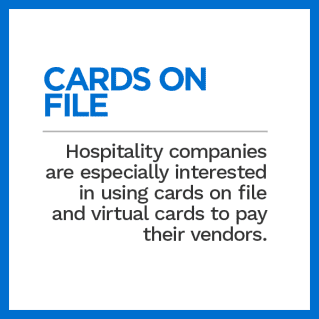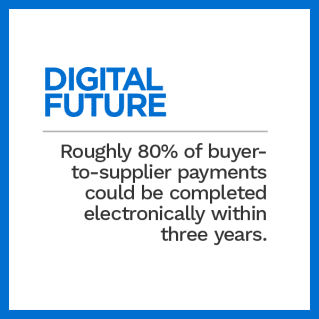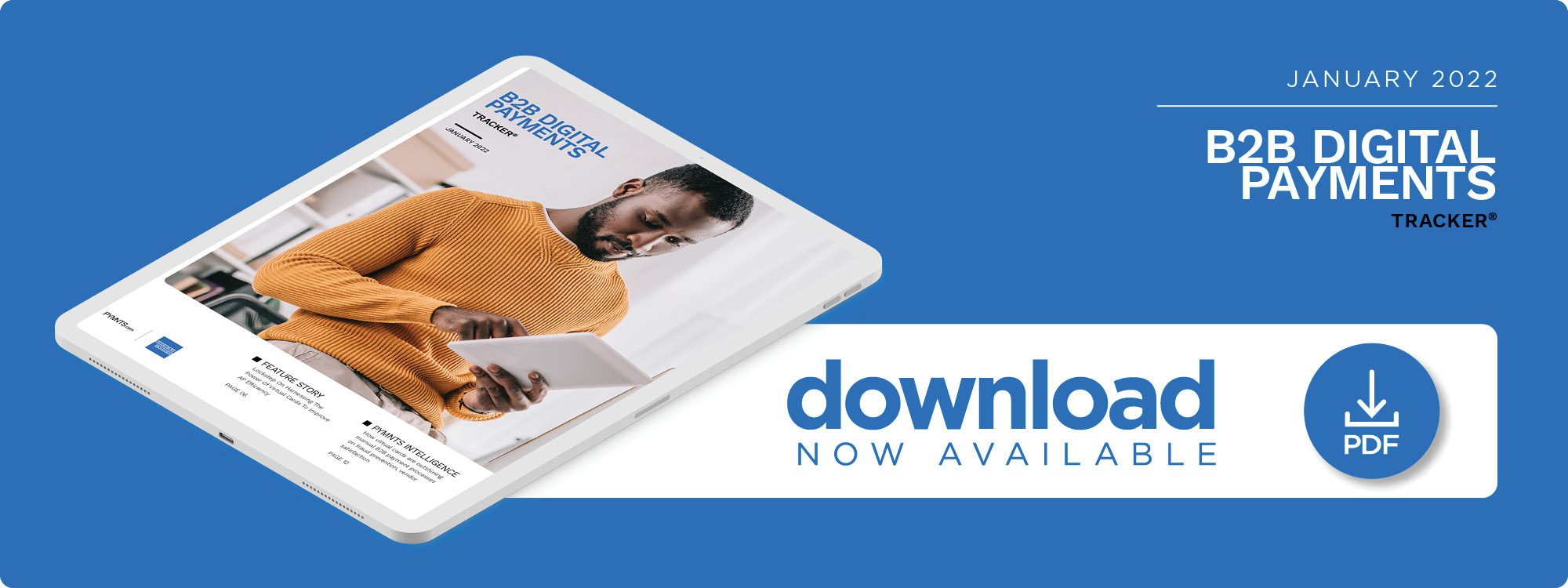Virtual Cards Help Improve Remote Accounts Payables Efficiencies

Throughout the pandemic, consumers’ reliance on digital payments technology has made such transaction methods an expectation rather than a perk. More than 80% of all consumers who use one of the top four digital wallet options are satisfied with their services. This methodology extends past traditional business-to-consumer (B2C) sales, however, and now business-to-business (B2B) firms are increasingly reliant on alternative payment methods to send and receive funds to vendors and buyers.
The spotlight is on one digital payment type across this sector: virtual cards. Businesses are increasingly recognizing the efficiency of virtual cards for expense management and accounts payable (AP) operations, and its frequency has increased an impressive 300% for hospitality clients from the beginning of the pandemic through 2021. Further, 56% of B2B buyers now demand several options when making purchases, including virtual card capabilities. It is no wonder virtual cards are closing in on legacy payment methods such as debit or credit cards, as they are proven to decrease fraud, improve transparency into employee spending and eradicate operational interferences.
The latest “B2B Digital Payments Tracker®” examines how B2B companies can use virtual cards to enhance their digital payments operations by improving fraud prevention and simplifying vendor transactions.
Around the B2B Digital Payments Space
Electronic payments are on the rise, and more than 80% of B2B payments could be entirely digital by 2025. AP and accounts receivable (AR) departments are increasingly turning to digitization over clunky manual processes to complete vendor payments and improve their cash flow. These tools also give B2B firms greater transparency into how they spend their money or where they obtain their highest revenue. Most chief financial officers (CFOs) claimed that the pandemic was the primary reason for their increased focus on payments innovations and believe it pushed small- to medium-sized businesses (SMBs) to adopt digital services to update their payments ecosystems.
 One such innovation is virtual cards, whose total worth is expected to reach $6.8 trillion by 2026 — a significant jump from $1.9 trillion in 2021. They are becoming particularly popular among B2B firms that rely on buyers to purchase bulk items for resale purposes, as they help employers to track their workers’ business expenses and set spending limits to prevent overspending or exploitation of funds. Additionally, gig economy companies, such as rideshare or food delivery services, can use virtual cards to appoint earned wage benefits to contract workers.
One such innovation is virtual cards, whose total worth is expected to reach $6.8 trillion by 2026 — a significant jump from $1.9 trillion in 2021. They are becoming particularly popular among B2B firms that rely on buyers to purchase bulk items for resale purposes, as they help employers to track their workers’ business expenses and set spending limits to prevent overspending or exploitation of funds. Additionally, gig economy companies, such as rideshare or food delivery services, can use virtual cards to appoint earned wage benefits to contract workers.
For more on these and other stories, visit the Tracker’s News and Trends.
Lockstep on How Virtual Cards Can Help Businesses Optimize Billing Processes and Reduce Fraud
The pandemic accelerated the push for digital payments and emphasized the shortcomings of clunky, outdated manual processes for many firms. As a result, a growing number of B2B organizations are tapping new technology to improve their operations and safely process high-value transactions. Matthew Shanahan, co-founder and chief strategy officer at connected accounting FinTech company Lockstep, believes that payment innovation is imminent — and even necessary — for businesses as they convert to remote models.
To learn more about how businesses can use virtual cards to process payments quickly and more securely to clients and vendors without stepping foot in the office, visit the Tracker’s Feature Story.
PYMNTS Intelligence: Why Virtual Cards Are the Future of B2B Digital Payments
The digital shift during the pandemic led to permanent behavioral changes among consumers and businesses alike. As a result, eCommerce transactions accelerated and are anticipated to continue on an upward trajectory, particularly for B2B firms. More than 60% of B2B buyers now expect to be able to purchase goods online, making digital payment options a necessity for company-wide success. Virtual cards are one such promising option, offering integrated security features that many other digital payment methods do not provide while also improving efficiency and cost, compared to manual processes.
To learn more about how digital payments are quickly becoming one of the most popular payment options among chief financial officers, visit the Tracker’s PYMNTS Intelligence section.
About the Tracker
The “B2B Digital Payments Tracker®,” done in collaboration with American Express, offers coverage of the most recent news and trends regarding advancements in digital payments strategies for B2B firms.
